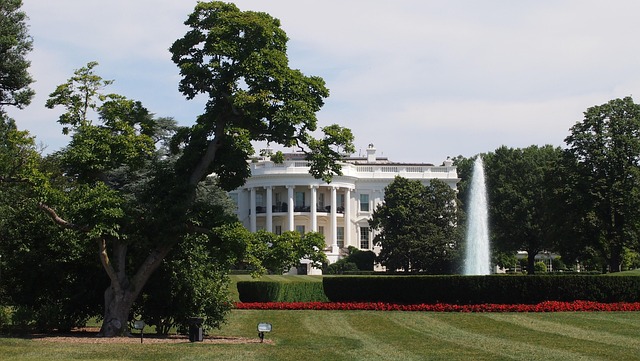How Creative Industries Thrive through Government Subsidies
The creative industries encompass a wide range of fields, including music, film, theater, visual arts, design, and digital media. These sectors are not only vital to the cultural fabric of society but also contribute significantly to the economy. However, despite their importance, creative enterprises often face challenges that can impede growth, including funding shortages and market saturation. Government subsidies play a pivotal role in alleviating these challenges, allowing creative industries to flourish. This article explores the ways in which government financial support fosters creativity, innovation, and sustainability within these sectors.
The Role of Government Subsidies
Government subsidies refer to financial assistance granted by the state to support specific industries or sectors. In the context of creative industries, these subsidies can take various forms, including grants, tax incentives, and funding programs. The primary objective of such subsidies is to stimulate growth, foster innovation, and enhance the overall cultural landscape of a nation.
One of the foremost reasons for providing subsidies is to promote cultural diversity. Creative industries often reflect a country’s heritage, values, and identity. By supporting these sectors, governments can ensure that a wide range of cultural expressions is preserved and promoted, thereby fostering a rich and diverse cultural environment.
Boosting Economic Growth
The creative industries contribute significantly to national economies, providing jobs and generating revenue. Governments recognize this potential and often use subsidies as a tool to boost economic development. By investing in the creative sectors, governments can stimulate job creation, leading to lower unemployment rates and a more vibrant economy.
Subsidies can help new and emerging creative businesses overcome the barriers to entry, allowing them to compete in the market. This not only benefits the businesses themselves but also contributes to a dynamic marketplace filled with diverse offerings. Projects that might not secure private funding due to perceived risk can thrive with government support, leading to innovation and new creative expressions.
Encouraging Innovation and Experimentation
Creativity is inherently tied to risk-taking and experimentation. However, engaging in innovative projects can be financially daunting for many creative professionals and organizations. Government subsidies alleviate some of this financial burden, allowing artists and creators the freedom to take risks and push boundaries.
Through grants and funding, creative individuals and organizations can pursue groundbreaking projects that might otherwise be deemed too risky. This support fosters a culture of innovation, leading to new art forms, genres, and mediums. Ultimately, when artists and creators are empowered to innovate, the entire creative ecosystem benefits, resulting in fresh ideas and stimulating cultural dialogues.
Promoting Accessibility and Inclusion
Another essential aspect of government subsidies is their role in promoting accessibility and inclusivity within the creative industries. Many creative initiatives aim to engage underrepresented communities and marginalized groups, ensuring that diverse voices are heard and celebrated.
Subsidies can provide the necessary resources to reach audiences who might not typically engage with the arts. For example, funding can support outreach programs, community exhibitions, and educational workshops. By encouraging participation from various demographic groups, government support not only enhances cultural richness but also fosters a more inclusive society.
Case Studies of Successful Government Support in Creative Industries
Several countries have implemented effective subsidy programs that have significantly benefited their creative sectors. Examining these case studies can offer valuable insights into the impact of government support.
Australia’s Screen Production Initiative
Australia has established a Screen Production Initiative designed to support the local film and television industry. By providing financial assistance to filmmakers, the government has stimulated the production of Australian stories, ultimately leading to a flourishing film sector that both entertains locally and gains international recognition.
This initiative has resulted in a substantial increase in local job creation, with thousands of Australians employed in various roles within the industry. Additionally, it has allowed Australian narratives to flourish on the global stage, showcasing the country’s unique culture and perspectives.
Canada’s Cultural Funding Programs
Canada has long been recognized for its support of the creative industries through multiple cultural funding programs. The Canada Council for the Arts is a prime example. It allocates funds to individual artists, organizations, and projects in various creative disciplines.
This program has allowed numerous Canadian artists to pursue their crafts, leading to an impressive array of creative works that reflect the country’s cultural landscape. Moreover, the financial support has enabled collaborations across different art forms, resulting in dynamic, interdisciplinary projects that may not have been possible without funding.
The Private Sector’s Role in a Subsidy-Driven Landscape
While government subsidies play a critical role, it is essential to acknowledge the interaction between public funding and private sector investment. Often, government support can act as a catalyst for private investments, drawing additional funding from corporations, philanthropic organizations, and individual donors.
For instance, when government funding is available, creative businesses may find it easier to attract private sponsors looking to associate their brands with innovative and socially impactful projects. This synergy between public and private funding creates a more sustainable financial ecosystem for creative industries, fostering continued growth and success.
Challenges and Considerations
Despite the clear benefits of government subsidies for creative industries, there are challenges and considerations that must be addressed for these programs to succeed fully. One challenge lies in ensuring that funding is allocated equitably across various sectors and demographics. It is crucial for governments to implement fair assessment processes that prioritize diverse voices and communities.
Transparency and accountability in the distribution of funds are also vital. Governments must ensure that funding mechanisms are free from corruption or favoritism, fostering public trust in these programs.
Moreover, it is important to analyze the long-term impacts of subsidies. Too much reliance on government support can create a dependency that hampers innovation and sustainability. Thus, finding a balance between providing necessary support and encouraging independent creative growth should remain a priority.
The Future of Creative Industries and Government Support
As we navigate an increasingly digital world, the landscape of creative industries continues to evolve. Government support will undoubtedly play a significant role in shaping the future of these sectors. Embracing new technological advancements and innovation will be imperative for artistic communities seeking to engage with audiences in dynamic ways.
Policymakers will need to remain flexible and responsive to the changing landscape, ensuring that funding mechanisms are adaptable to emerging trends within the creative industries. As artists and creators explore new horizons, support from the government can help sustain a thriving cultural sector that inspires and enriches society.
Conclusion
In conclusion, government subsidies are vital for the growth and sustainability of creative industries. By providing necessary financial support, governments can foster innovation, cultural diversity, and economic growth. The positive impact of such funding not only enhances the creative landscape but also contributes to a richer, more inclusive society. As we move forward, collaborative efforts between the public and private sectors will be essential for ensuring that creative industries continue to thrive, reflecting the evolving expression of human creativity and artistry.



